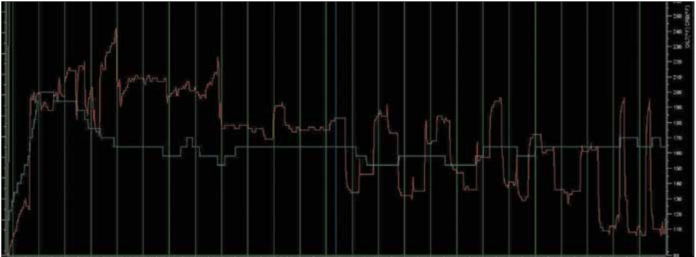After resolving a glitch in my subscription dating back to March, I sat down to catch up with the back issues I missed. I began reading the April 2020 issue last evening. In “Hear Me Out,” the article covering communications with ATC, Mr. Burnside supplied a sidebar about operations at non-towered airports. He stated, “Personally, I don’t need your N-number; just the type.” Well, you personally may not need the N-number, but the FAA does. In Advisory Circular AC 90-66B, “Non-Towered Airport Flight Operations,” you will find the following:
“Self-announce transmissions may include aircraft type to aid in identification and detection, but should not use paint schemes or color descriptions to replace the use of the aircraft call sign. For example, “MIDWEST TRAFFIC, TWIN COMMANDER FIVE ONE ROMEO FOXTROT TEN MILES NORTHEAST” or “MIDWEST TRAFFIC, FIVE ONE ROMEO FOXTROT TWIN COMMANDER TEN MILES NORTHEAST,” not “MIDWEST TRAFFIC, BLUE AND WHITE TWIN COMMANDER TEN MILES NORTHEAST.”
So, when self-announcing on a Unicom frequency, the aircraft call sign which, for the general aviation aircraft that we fly is the N-number, is to be used, not paint schemes or colors. Type may be used, but is optional. This is now being emphasized by FAA since, with the growing use of ADS-B In, hearing the N-number, and then being able to find it on a moving map, greatly aids a pilot in locating traffic and seeing the “Big Picture” more easily. You may say that Advisory Circulars are only “advisory,” but my understanding is that the FAA considers them to be pretty much regulatory. If a pilot does not follow the recommendations that are given, and there is an accident or incident, said pilot had better be prepared to explain to the FAA why she or he did not follow the FAA’s published guidance.
I think you do a disservice to your readers by offering your personal opinion as acceptable behavior, when it is contrary to the published information that the FAA expects to be followed. It is not what I expect from what otherwise is a very professionally presented magazine. Furthermore, it does not help your readers to develop more professional pilot habits, but rather just the opposite.
Bob Hartmaier – Via email
Bob, you make a good point by quoting the AC, but we’re going to have to disagree on using the N-number, and I acknowledge that my personal preference puts me at odds with the FAA.
First, no one in the pattern cares what the registration is; we only care about the aircraft type, where you are and what you’re going to do. Second, it takes time to include the N-number in the transmission and, if someone is giving position reports at every leg of the pattern, it eats up the time the rest of us have to make our own announcements.
Third, I’d like to see where the FAA ties call-sign usage at non-towered airports to spotting that traffic on ADS-B. Not all aircraft have that capability, the FAA itself says it’s advisory only and I’m not sure the agency wants us head-down in the cockpit at a non-towered airport, pawing at an iPad. Got a reference?
ENGINE-OUT ROUTING
I’ve added to the fine “Engine-Out Drills” article (October 2020) the instruction to always fly the safest route. For example, when flying from Seattle to Orcas Island, I fly the inland route rather than the water route, which includes a 30-minute flight over open ocean: many more places to land. I apply my “safest route rule” to all planning. It has a calming effect.
Tim Firnstahl – Via email
FATE IS THE HUNTER
Strange how we can interpret actions differently. When I read Fate is the Hunter, referred to in November’s Accident Probe installment, “Deadly Distractions,” I took Captain Ross’s match lighting to be practical—not that distractions for learning aren’t. Since Gann’s attitude gyro had tumbled, a lighted match would help him know which way was up. A flame burns upward due to gravity (unless a G-load), indicating if the wings are level.
Thanks for the great article!
Rhett Dennerline – Chicago, Ill.
POWER AND STEEP TURNS
With regard to the comments concerning adding power during steep turn maneuvers, Unicom, January 2021, I submit these thoughts: Without adding power, the airspeed decreases, requiring more back pressure on the elevator to maintain altitude, duh! Depending on the aircraft, this can be a little extra or a lot of back pressure, which can result in pitch oscillations as the turn progresses. While perhaps staying within the required altitude limits (or not), these oscillations tend to give the maneuver a ragged, poorly controlled appearance.
With a little practice, the proper amount of added power is easily determined and the entry airspeed remains constant throughout, requiring only the amount of back pressure necessary to compensate for the banked G loading. This results in a smoother, more elegant steep turn!
Obviously, this requires the reduction of back pressure and power when rolling out. If you are looking for a more intense discussion of steep turns, add the quandary of whether or not to trim in the turn.
Jim Piper – Via email
ENGINE BREAK-IN
Nice article (December 2020, “Engine Break-In”) on breaking in an engine! In 2016, after overhaul, I flew four hours, following Ed Kollins’ advice on the routine. In looking at the engine-analyzer numbers from that flight, I think the oil temperature provides a nice state-of-the-break-in summary.
The attached JPI graph (below) shows the “carb” temp (actually manifold temperature, in a turbocharged Mooney M20K) and the oil temp. You can see that power changes through the flight are reflected in manifold temp (blue) and the break-in success is reflected in the oil temp (red).
Dan Johnson – Via email




